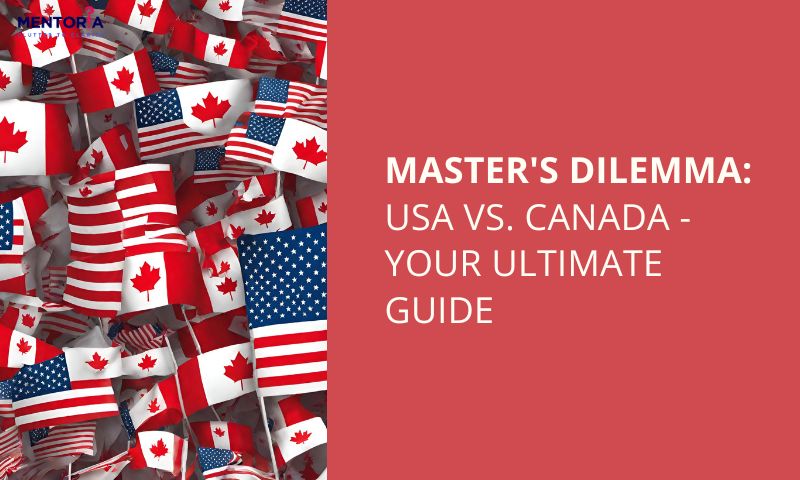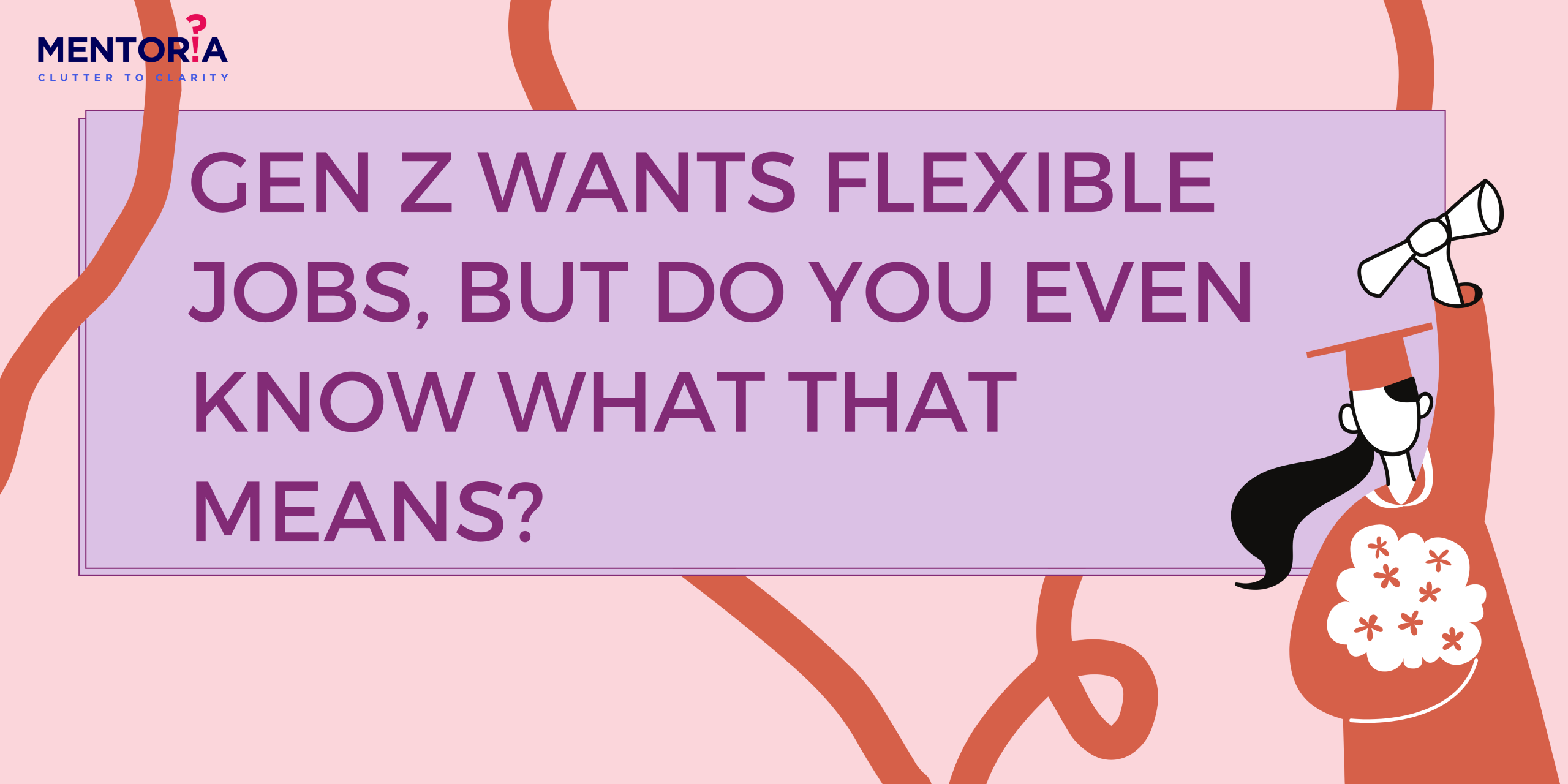Master’s Dilemma: USA Vs. Canada – Your Ultimate Guide

Considering a Master’s degree opens a world of choices, and one crucial decision is selecting the right destination. It’s difficult to choose between the two, the USA and Canada, each with its own set of attractions. The question is, which side of the border aligns better with your aspirations and goals? The USA flaunts the grandeur of the Great American Dream, promising academic prestige and diverse opportunities. Meanwhile, Canada charms with its friendly ambiance and a commitment to quality education. In this blog, we will tell you all about the intricacies of this academic crossroads, discovering the distinguishing features of these two North American giants, and helping you navigate towards a future that suits your ambitions.
USA v Canada
The Great American Dream Vs. The Canadian Charm
In the pursuit of higher education, the USA stands tall, draped in the attraction of the Great American Dream. Renowned for its prestigious Ivy League institutions like Harvard and Stanford, the USA attracts students with promises of academic excellence and unparalleled opportunities. The diversity of people, ideas, and landscapes creates an environment where ambition is nurtured. The American Dream isn’t just a concept; it’s an experience that challenges you to dream big and reach for the stars.
- Top Universities: Harvard, Massachusetts Institute of Technology (MIT), Stanford University.
- Harvard, a perennial contender for the top spot globally, offers a diverse range of programs. MIT excels in STEM fields, while Stanford is renowned for its innovation and entrepreneurship programs.
On the flip side, Canada, with its Canadian Charm, offers a unique blend of world-class education and a friendly atmosphere. The warmth of the locals and the multicultural ambience provide a welcoming embrace to international students. Institutions like McGill and the University of Toronto are not just academic havens but also gateways to a culturally rich experience. Choosing Canada means immersing yourself in a society that values inclusivity and the pursuit of knowledge within the backdrop of breathtaking natural beauty.
- Top Universities: University of Toronto, University of British Columbia, McGill University.
- The University of Toronto stands out for its strong emphasis on research. UBC’s stunning campus and focus on sustainability attract students globally. McGill, located in Montreal, is celebrated for its bilingual environment and vibrant student life.
Academic Landscape: The Battle Of Excellence
The academic landscape in the USA is excellent, where the likes of MIT and Caltech excel in the realm of science and technology. The diversity of specialisations available, from Business to Engineering to Social Sciences, caters to every academic appetite. The cutting-edge research facilities and renowned faculty create an environment that fosters innovation and intellectual growth.
- Specialisations: The USA provides a vast array of specialisations, ranging from Computer Science at MIT to Business at Harvard and Social Sciences at Stanford.
- According to the QS World University Rankings, MIT is globally recognised for Engineering and Technology, emphasising its academic prowess in these fields.
In Canada, the academic landscape is no less impressive. Institutions like the University of British Columbia and the University of Toronto offer a mix of academic prowess and stunning natural beauty. The emphasis on research and a holistic approach to education ensures that students are well-prepared for the challenges of the professional world. The academic competition in Canada may be less fierce, but it is equally rewarding for those seeking a well-rounded education.
- Specialisations: Canadian universities, like the University of Toronto, excel in fields such as Medicine, Engineering, and Social Sciences.
- The University of British Columbia consistently ranks high for Environmental Sciences, reflecting Canada’s commitment to sustainability.
Crunching Numbers: The Cost Conundrum
In the USA, pursuing a Master’s degree can be a costly affair. With an average annual cost of around INR 65 lakhs, including tuition and living expenses, it’s crucial to consider the financial implications. However, the investment often comes with the potential for higher returns, especially considering the robust job market and the prestige associated with American degrees. The cost may be steep, but for many, the payoff justifies the expense.
Breakdown of Expenses (per year):
- Tuition Fee: INR 35-45 lakhs
- Living Expenses: INR 10-15 lakhs
- Food: INR 5 lakhs
- Travel: INR 3 lakhs
- Total: INR 53-68 lakhs
On the other side of the coin, Canada offers a more economical alternative. With an average annual cost of around INR 40 lakhs, studying in Canada can significantly lighten the financial burden. Additionally, part-time work opportunities for international students can help cover living expenses. While the cost may be lower, the quality of education and the potential for a fulfilling career remain high, making Canada an attractive option for those mindful of their budgets.
Breakdown of Expenses (per year):
- Tuition Fee: INR 20-25 lakhs
- Living Expenses: INR 8-12 lakhs
- Food: INR 4 lakhs
- Travel: INR 2 lakhs
- Total: INR 34-43 lakhs
Job Prospects: Navigating The Employment Seas
The USA, with its sprawling tech industry and global corporations, presents a vast variety of job opportunities for Master’s graduates. Silicon Valley, Wall Street, and major cities like New York and San Francisco are magnets for talent. The competitive job market offers challenges but also the potential for career growth and lucrative salaries.
- Career Opportunities: Silicon Valley offers opportunities in tech giants like Google, Apple, and Facebook. Wall Street in New York beckons finance enthusiasts, while the pharmaceutical and healthcare industry thrives in Boston.
- The USA’s unemployment rate as of 2022 is 3.8%, showcasing a dynamic job market (Source: U.S. Bureau of Labor Statistics).
In Canada, the job market is robust and diverse, with a particular emphasis on work-life balance. The country’s stable economy and friendly immigration policies make it an appealing destination for those looking to build a long-term career. Industries like technology, healthcare, and finance offer promising avenues for employment. While the scale might be smaller compared to the USA, Canada provides a fertile ground for those seeking stability and a fulfilling professional life.
- Career Opportunities: Toronto is a financial hub, Vancouver thrives in technology, and Montreal excels in aerospace and pharmaceuticals.
- Canada’s unemployment rate hovers around 5.8%, signifying a stable job market (Source: Statistics Canada).
Scholarships And Funding: The Golden Tickets
The USA, known for its competitive spirit, also extends this to scholarships. Many prestigious institutions offer merit-based scholarships, recognising and rewarding academic excellence. While the competition is fierce, the rewards can be substantial, potentially alleviating the financial burden of tuition. Researching and applying for scholarships is a crucial step in making the American dream financially feasible for many aspiring Master’s students.
Scholarships:
- Fulbright Scholarship: Merit-based, covering tuition, living expenses, and airfare.
- Hubert H. Humphrey Fellowship: For mid-career professionals, covering all expenses.
- The USA offers numerous institution-specific scholarships, emphasising academic achievements.
In Canada, a plethora of scholarship opportunities awaits deserving students. Government-funded programs, university-specific scholarships, and private initiatives provide a variety of options. The emphasis on supporting international students in their academic pursuits makes Canada not only an affordable option but also an encouraging one.
Scholarships:
- Vanier Canada Graduate Scholarships: Recognising academic excellence, covering tuition and living expenses.
- Trudeau Foundation Scholarships: Focused on social sciences and humanities, offering financial support.
- Canada invests in international talent through various scholarship programs.
Cultural Quotient: Beyond The Books
Beyond academia, the USA offers a cultural background that is as diverse as its people. From the bustling streets of New York City to the laid-back vibes of California, each state contributes a unique flavour to the American experience. The exposure to different cultures, traditions, and perspectives enriches the educational journey. It’s not just about what you learn in the classroom; it’s about the lessons you absorb from the world around you.
In the United States, English is the primary language of instruction, and proficiency in English is a crucial aspect of academic success. However, the U.S. is a melting pot of cultures, each contributing to the linguistic tapestry. Regional accents, colloquialisms, and variations in vocabulary can add a layer of complexity to your linguistic journey. Universities often offer support services such as English language courses and writing centres to assist international students in acclimating to the nuances of American English.
Moreover, the U.S. academic environment values participation and verbal communication. Classroom discussions, presentations, and collaborative projects are integral components of the learning process. Developing strong verbal communication skills becomes not just an academic necessity but also a cultural adaptation, allowing you to fully engage with your peers and professors.
In Canada, the cultural quotient is equally enticing. The friendly demeanour of Canadians, coupled with a multicultural society, creates an environment that feels like a home away from home. Whether you’re exploring the vibrant neighbourhoods of Toronto or enjoying the natural wonders of Banff, Canada’s culture is an integral part of the education experience. It’s about forming connections, making friends from around the globe, and growing personally as you navigate through a new cultural landscape.
Canada, known for its commitment to multiculturalism, embraces both English and French as official languages. While English is widely spoken across the country, the province of Quebec is predominantly French-speaking. Universities in Canada recognise and celebrate this linguistic diversity, often offering programs and services in both languages.
For international students, this presents a unique opportunity to enhance language skills. Many Canadian universities provide language support services, including English as a Second Language (ESL) programs and resources to help students feel more comfortable with academic English. Additionally, bilingualism is highly valued in the Canadian job market, opening doors to a broader range of opportunities.
Immigration Policies: Charting Your Future Course
The USA’s immigration policies require careful navigation. The process can be complex and competitive, with various visa options and pathways to explore. Planning for post-graduation work and potential long-term residency requires foresight and understanding of the intricate immigration system. While the challenges are significant, the potential rewards, such as access to a dynamic job market and diverse cultural experiences, make it a journey worth considering.
- Immigration Policy: The USA offers various visa options, including the F-1 student visa and Optional Practical Training (OPT) for post-graduation work.
- Understanding the intricacies of the H-1B visa for long-term employment is crucial for those planning to stay in the USA
Recent years have seen changes in immigration policies, impacting the experiences of Indians aspiring to live and work in the USA. The H-1B visa, a popular choice for skilled professionals, has undergone stricter regulations and scrutiny, making it more challenging for Indians to secure this visa.
Moreover, the green card backlog has been a significant concern for Indian immigrants. The long wait times for processing green card applications, particularly in employment-based categories, have led to uncertainties and delays in obtaining permanent residency. The recent political climate has also contributed to a sense of unpredictability for those navigating the U.S. immigration landscape.
In Canada, the immigration landscape is more welcoming. The country’s friendly policies, such as the Post-Graduation Work Permit Program (PGWPP), provide international students with an opportunity to gain valuable Canadian work experience after completing their studies. The Canadian government actively encourages skilled individuals to contribute to the country’s growth, making the transition from student to permanent resident a smoother and more achievable process.
- Immigration Policy: Canada’s Post-Graduation Work Permit Program (PGWPP) allows students to work after graduation. Express Entry is a points-based immigration system for permanent residency.
- Canada’s immigration policies prioritise attracting skilled individuals to contribute to the country’s growth
While Canada has earned a reputation for its welcoming immigration policies, recent events have sparked concerns within the Indian community. Instances of Indian students facing deportation due to alleged immigration violations have garnered attention, leading to a backlash against the Canadian immigration system.
Despite Canada’s reputation for being immigrant-friendly, these incidents have raised questions about the challenges faced by Indians in obtaining and maintaining legal status. It highlights the importance of understanding and adhering to immigration regulations to avoid potential repercussions.
In Canada, the recent incidents involving the deportation of Indian students have triggered a reevaluation of the country’s immigration practices. This has led to calls for increased transparency and fair treatment within the immigration system.
It’s crucial for Indian immigrants to stay informed about the evolving immigration landscapes in both countries. Seeking advice from immigration experts, staying updated on policy changes, and ensuring compliance with regulations are essential steps to navigate the complexities of immigration successfully.
Take Your Pick
As you stand at the crossroads of this academic journey, the decision between the USA and Canada is deeply personal. The Great American Dream tempts with its prestige and vast opportunities, while the Canadian Charm offers warmth and a more budget-friendly approach. Consider your academic ambitions, financial constraints, and the cultural landscape that resonates with your heart. Your Master’s adventure is not just about a degree; it’s about the experiences, the people you meet, and the growth you achieve.
This is where Mentoria steps in as your guiding compass. With Mentoria, your child gains access to tailored preparation strategies that align with their unique aspirations and academic goals. Our dedicated team of career mentors is here to provide comprehensive assistance, ensuring a smooth journey towards the right educational path. With Mentoria, the journey to discovering the ideal Master’s degree becomes not just manageable but transformative, helping your child bring out the best in themselves.









